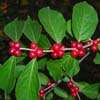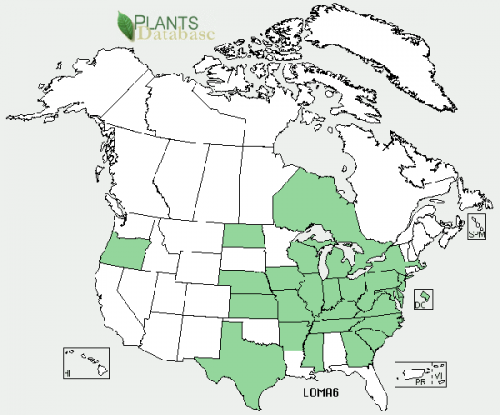Stopping the invasive Amur honeysuckle

(Phys.org)—As leaves drop in autumn, it's not only a good time to enjoy the reds, yellows and oranges drifting from the trees—it's also a good time to kill honeysuckle.
Amur honeysuckle, a highly aggressive invasive woody shrub, is rapidly taking over millions of acres in the eastern and midwestern United States in a sort of ecological equivalent of Sherman's March.
"If you're driving along a woods in the fall, you'll see all these shrubs that are still green after all of the trees have lost their leaves," said Ryan McEwan, assistant biology professor. "That's honeysuckle, and it's very much in evidence. It can hold its leaves into December."
The honeysuckle can grow to 20 feet tall and pushes out virtually all native species, creating an uninterrupted monoculture where once a diversity of plants supported native wildlife, he said.
McEwan researches the basic biology of honeysuckle; just this year, three journals—American Midland Naturalist, Plant Ecology and Biological Invasions—have published research on the shrub he either wrote or co-wrote. His focus is to find out which traits enable it to move in so quickly and so completely, despite being a "minor player" in its own native habitat along the Amur River in China
One of those traits is that extended leaf time, creating a thick canopy of leaves that shades out light from native plants and can last from early spring into early winter. But that very trait also makes an opening for homeowners and landowners to attack it.

The best time is late October and early November, when all the other plants are bare and the honeysuckle is still hanging on to its leaves. By spraying it with an herbicide such as glycosophate (the active ingredient in Round-Up©), McEwan said the leaves take up the herbicide and transport it into the plant, while minimizing the impact on native plants. So, when the plant finally drops its leaves, they don't come back in the spring.
That method works, along with staying ahead of small invasions by pulling young plants, he said. And it's worth the effort.
"The level of energy and investment it takes to eradicate it and then to restore the native species is enormous," he said.
To learn more about Amur honeysuckle, McEwan recommends visiting the Ohio Invasive Plants Council and the USDA Amur honeysuckle sites.
More information: plants.usda.gov/java/profile?symbol=LOMA6
Journal information: Biological Invasions
Provided by University of Dayton
















